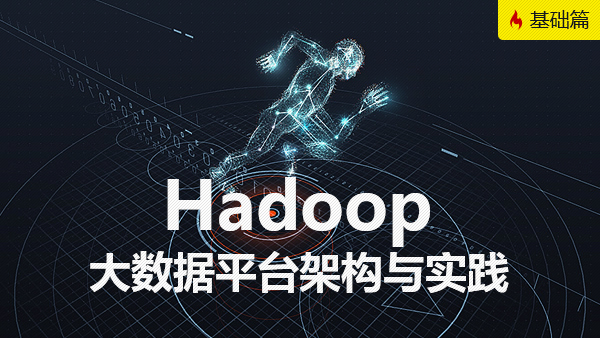Graphx的实现代码并不多,这得益于Spark RDD niubility的设计。众所周知,在分布式上做图计算需要考虑点、边的切割。而RDD本身是一个分布式的数据集,所以,做Graphx只需要把边和点用RDD表示出来就可以了。本文就是从这个角度来分析Graphx的运作基本原理(本文基于Spark2.0)。
分布式图的切割方式
在单机上图很好表示,在分布式环境下,就涉及到一个问题:图如何切分,以及切分之后的不同子图如何保持彼此的联系构成一个完整的图。图的切分方式有两种:点切分和边切分。在Graphx中,采用点切分。
在GraphX中,Graph类除了表示点的VertexRDD和表示边的EdgeRDD外,还有一个将点的属性和边的属性都包含在内的RDD[EdgeTriplet]。
方便起见,我们先从GraphLoader中来看看如何从一个用边来描述图的文件中如何构建Graph的。
def edgeListFile(
sc: SparkContext, path: String, canonicalOrientation: Boolean = false, numEdgePartitions: Int = -1, edgeStorageLevel: StorageLevel = StorageLevel.MEMORY_ONLY, vertexStorageLevel: StorageLevel = StorageLevel.MEMORY_ONLY)
: Graph[Int, Int] =
{ // Parse the edge data table directly into edge partitions
val lines = ... ...
val edges = lines.mapPartitionsWithIndex { (pid, iter) =>
... ...
Iterator((pid, builder.toEdgePartition))
}.persist(edgeStorageLevel).setName("GraphLoader.edgeListFile - edges (%s)".format(path))
edges.count()
GraphImpl.fromEdgePartitions(edges, defaultVertexAttr = 1, edgeStorageLevel = edgeStorageLevel,
vertexStorageLevel = vertexStorageLevel)
} // end of edgeListFile从上面精简的代码中可以看出来,先得到lines一个表示边的RDD(这里所谓的边依旧是文本描述的),然后再经过一系列的转换来生成Graph。
EdgeRDD
GraphImpl.fromEdgePartitions中传入的第一个参数edges为EdgeRDD的EdgePartition。先来看看EdgePartition究竟为何物。
class EdgePartition[
@specialized(Char, Int, Boolean, Byte, Long, Float, Double) ED: ClassTag, VD: ClassTag]( localSrcIds: Array[Int], localDstIds: Array[Int], data: Array[ED], index: GraphXPrimitiveKeyOpenHashMap[VertexId, Int], global2local: GraphXPrimitiveKeyOpenHashMap[VertexId, Int], local2global: Array[VertexId], vertexAttrs: Array[VD], activeSet: Option[VertexSet])
extends Serializable {其中:localSrcIds 为本地边的源点的本地编号。localDstIds 为本地边的目的点的本地编号,与localSrcIds一一对应成边的两个点。data 为边的属性值。index 为本地边的源点全局ID到localSrcIds中下标的映射。global2local 为点的全局ID到本地ID的映射。local2global 是一个Vector,依次存储了本地出现的点,包括跨节点的点。
通过这样的方式做到了点切割。
有了EdgePartition之后,再通过得到EdgeRDD就容易了。
VertexRDD
现在看fromEdgePartitions
def fromEdgePartitions[VD: ClassTag, ED: ClassTag]( edgePartitions: RDD[(PartitionID, EdgePartition[ED, VD])], defaultVertexAttr: VD, edgeStorageLevel: StorageLevel, vertexStorageLevel: StorageLevel): GraphImpl[VD, ED] = {
fromEdgeRDD(EdgeRDD.fromEdgePartitions(edgePartitions), defaultVertexAttr, edgeStorageLevel,
vertexStorageLevel)
}fromEdgePartitions 中调用了 fromEdgeRDD
private def fromEdgeRDD[VD: ClassTag, ED: ClassTag]( edges: EdgeRDDImpl[ED, VD], defaultVertexAttr: VD, edgeStorageLevel: StorageLevel, vertexStorageLevel: StorageLevel): GraphImpl[VD, ED] = {
val edgesCached = edges.withTargetStorageLevel(edgeStorageLevel).cache()
val vertices =
VertexRDD.fromEdges(edgesCached, edgesCached.partitions.length, defaultVertexAttr)
.withTargetStorageLevel(vertexStorageLevel)
fromExistingRDDs(vertices, edgesCached)
}可见,VertexRDD是由EdgeRDD生成的。接下来讲解怎么从EdgeRDD生成VertexRDD。
def fromEdges[VD: ClassTag](
edges: EdgeRDD[_], numPartitions: Int, defaultVal: VD): VertexRDD[VD] = {
val routingTables = createRoutingTables(edges, new HashPartitioner(numPartitions))
val vertexPartitions = routingTables.mapPartitions({ routingTableIter =>
val routingTable = if (routingTableIter.hasNext) routingTableIter.next() else RoutingTablePartition.empty
Iterator(ShippableVertexPartition(Iterator.empty, routingTable, defaultVal))
}, preservesPartitioning = true) new VertexRDDImpl(vertexPartitions)
} private[graphx] def createRoutingTables(
edges: EdgeRDD[_], vertexPartitioner: Partitioner): RDD[RoutingTablePartition] = { // Determine which vertices each edge partition needs by creating a mapping from vid to pid.
val vid2pid = edges.partitionsRDD.mapPartitions(_.flatMap( Function.tupled(RoutingTablePartition.edgePartitionToMsgs)))
.setName("VertexRDD.createRoutingTables - vid2pid (aggregation)")
val numEdgePartitions = edges.partitions.length
vid2pid.partitionBy(vertexPartitioner).mapPartitions(
iter => Iterator(RoutingTablePartition.fromMsgs(numEdgePartitions, iter)),
preservesPartitioning = true)
}从代码中可以看到先创建了一个路由表,这个路由表的本质依旧是RDD,然后通过路由表的转得到RDD[ShippableVertexPartition],最后再构造出VertexRDD。先讲解一下路由表,每一条边都有两个点,一个源点,一个终点。在构造路由表时,源点标记位或1,目标点标记位或2,并结合边的partitionID编码成一个Int(高2位表示源点终点,低30位表示边的partitionID)。再根据这个编码的Int反解出ShippableVertexPartition。值得注意的是,在createRoutingTables中,反解生成ShippableVertexPartition过程中根据点的id hash值partition了一次,这样,相同的点都在一个分区了。有意思的地方来了:我以为这样之后就会把点和这个点的镜像合成一个,然而实际上并没有。点和边是相互关联的,通过边生成点,通过点能找到边,如果合并了点和点的镜像,那也找不到某些边了。ShippableVertexPartition依旧以边的区分为标准,并记录了点的属性值,源点、终点信息,这样边和边的点,都在一个分区上。
最终,通过new VertexRDDImpl(vertexPartitions)生成VertexRDD。
Graph
def fromExistingRDDs[VD: ClassTag, ED: ClassTag]( vertices: VertexRDD[VD], edges: EdgeRDD[ED]): GraphImpl[VD, ED] = {
new GraphImpl(vertices, new ReplicatedVertexView(edges.asInstanceOf[EdgeRDDImpl[ED, VD]]))
}在fromExistingRDDs调用new GraphImpl(vertices, new ReplicatedVertexView(edges.asInstanceOf[EdgeRDDImpl[ED, VD]]))来生成图。
class ReplicatedVertexView[VD: ClassTag, ED: ClassTag]( var edges: EdgeRDDImpl[ED, VD], var hasSrcId: Boolean = false, var hasDstId: Boolean = false)
ReplicatedVertexView是边和图的视图,当点的属性发生改变时,将改变传输到对应的边。
作者:AlbertCheng
链接:https://www.jianshu.com/p/850eb13565c2

 随时随地看视频
随时随地看视频



